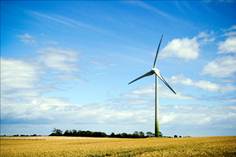

Environment
Questions of efficiency
In response to critical comments made by National Trust Chairman Sir Simon Jenkins about wind power, Blue & Green Tomorrow speaks with Dr Matthias Fripp, NextEra Energy Resources research fellow in renewable energy at Oxford University’s Environmental Change Institute.
In response to critical comments made by National Trust Chairman Sir Simon Jenkins about wind power, Blue & Green Tomorrow speaks with Dr Matthias Fripp, NextEra Energy Resources research fellow in renewable energy at the University of Oxford’s Environmental Change Institute.
What is your view on questions over renewable energy efficiency?
Discussing the efficiency of renewable resources is rarely meaningful. When choosing a power source, the things that matter are the cost and environmental impact per unit of electricity and the timing of electricity production.
Given the above parameters, what are your views on wind generated power?
Wind ranks very well on cost, fairly well on timing (matching the winter peak demand in the UK) and very well on environmental impacts other than its effect on the view. No alternative is perfect: solar power has minimal effect on the view, but has worse timing than wind in the UK, and currently has much higher costs. Wave power is still at the prototype stage and can only be developed on a limited scale. Tidal and hydro power also have limited potential and have significant environmental impacts of their own. Nuclear power has uncertain costs and environmental impacts – estimates tend to be driven more by faith (or lack of it) than hard numbers. At any rate it may be a little reckless to develop more nuclear plants when no permanent repository has been established for nuclear waste. The final alternative — leaving climate change unaddressed – could disrupt the UK’s heritage lands even more than developing renewable power.
Given the choices available, what are the main drawbacks of wind power?
Given these choices, the main drawback of wind farms appears to be their effect on the view. Unlike nuclear or fossil power, this negative effect is reversible. One option may be to develop wind farms now and remove them when they reach the end of their life in 25-30 years, replacing them with something with even lower impact, such as solar power, whose cost is falling quickly. Perhaps what is needed is a “grand bargain” to identify certain areas for wind development, retaining the view in other areas, so that the UK can move ahead with a low-carbon power system.
What about the requirement for backup plants?
It is a common misperception that backup plants somehow undo the environmental benefits of wind power. The environmental impact of building power plants is negligible compared to the environmental impact of running them, and in fact we have already built most of the plants we would use to backup wind power. In other words, we already have enough conventional plants to meet peak electricity loads.
How do you perceive the benefits of renewable power?
The real environmental benefit of renewable power comes when it allows us to avoid running existing plants and, in this respect, wind actually performs quite well; I have found that even when accounting for the emissions from running backup capacity during a sudden wind drop, wind can still reduce CO2 emissions by 90-95% compared with getting our power from natural gas plants alone. Even nuclear or carbon-capture plants are not this clean on a life-cycle basis. It is possible to build very clean power systems that use wind and solar power when they are available and conventional resources at other times.
Related articles:


 Environment9 months ago
Environment9 months agoAre Polymer Banknotes: an Eco-Friendly Trend or a Groundswell?

 Environment11 months ago
Environment11 months agoEco-Friendly Home Improvements: Top 7 Upgrades for 2025

 Features8 months ago
Features8 months agoEco-Friendly Cryptocurrencies: Sustainable Investment Choices

 Features9 months ago
Features9 months agoEco-Friendly Crypto Traders Must Find the Right Exchange





























